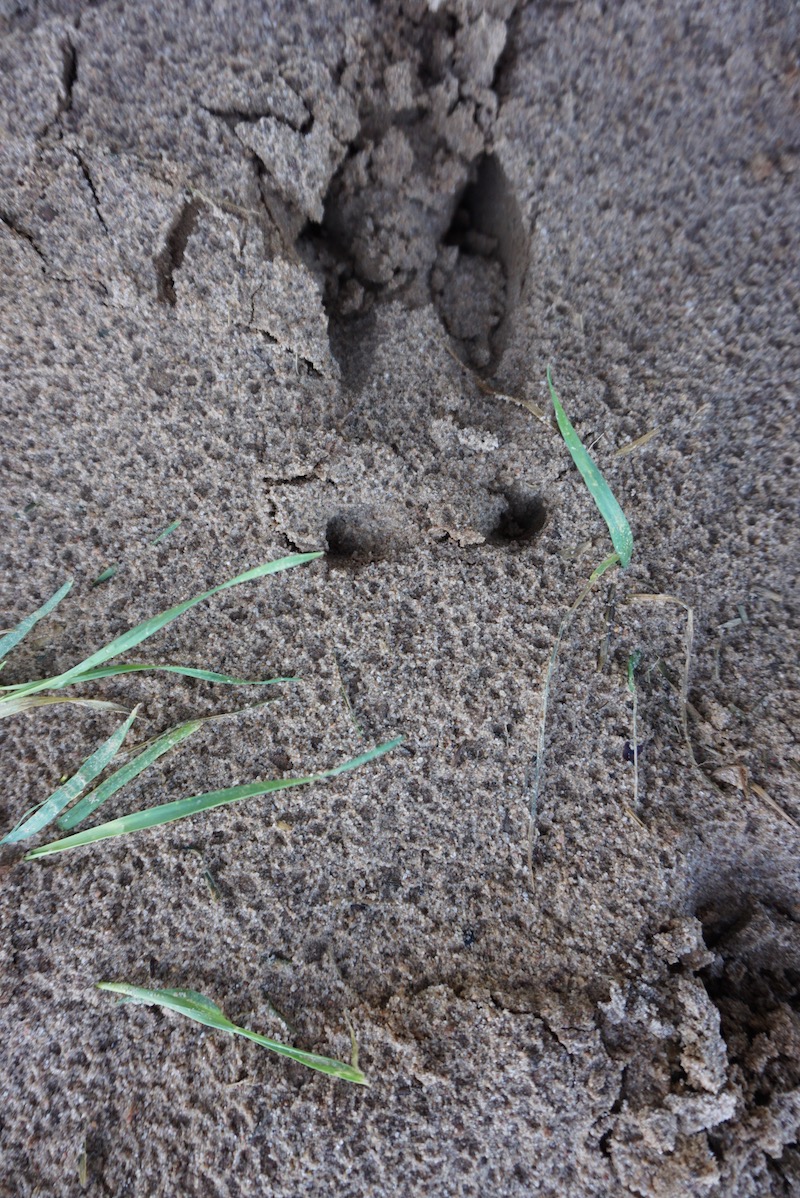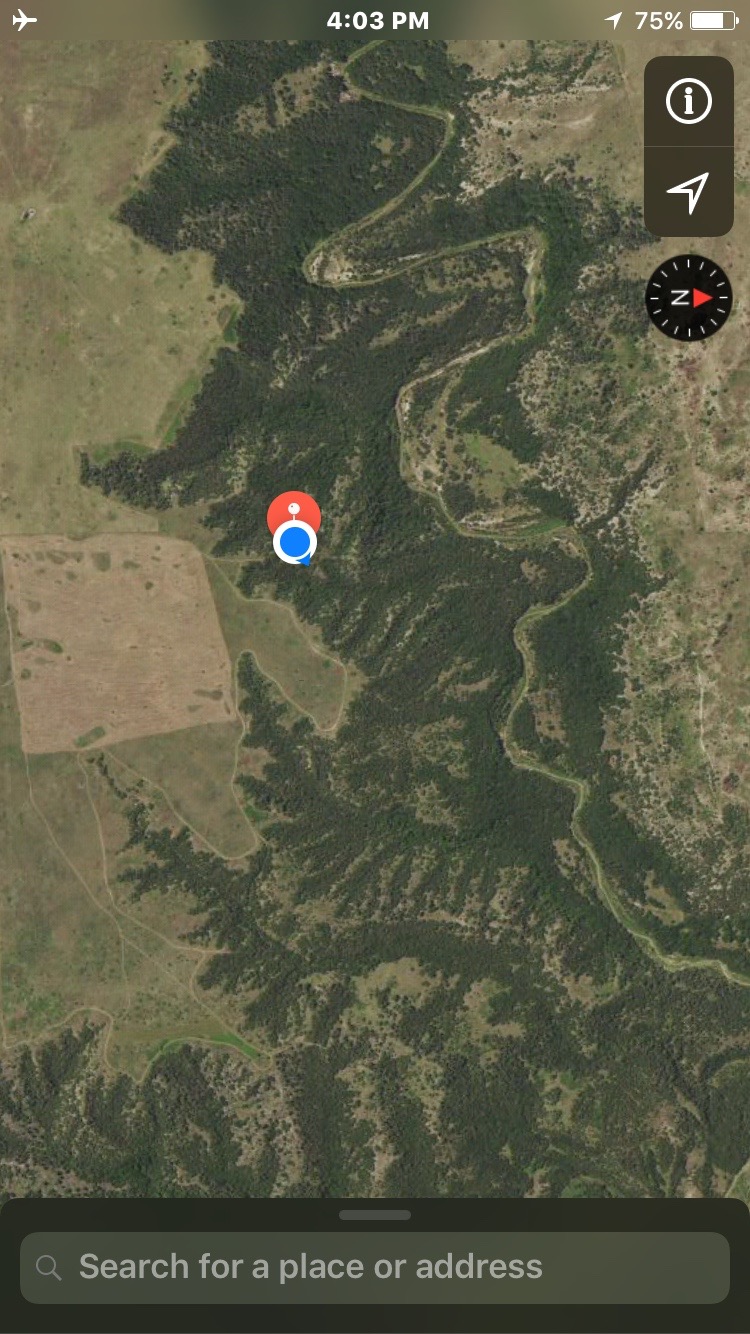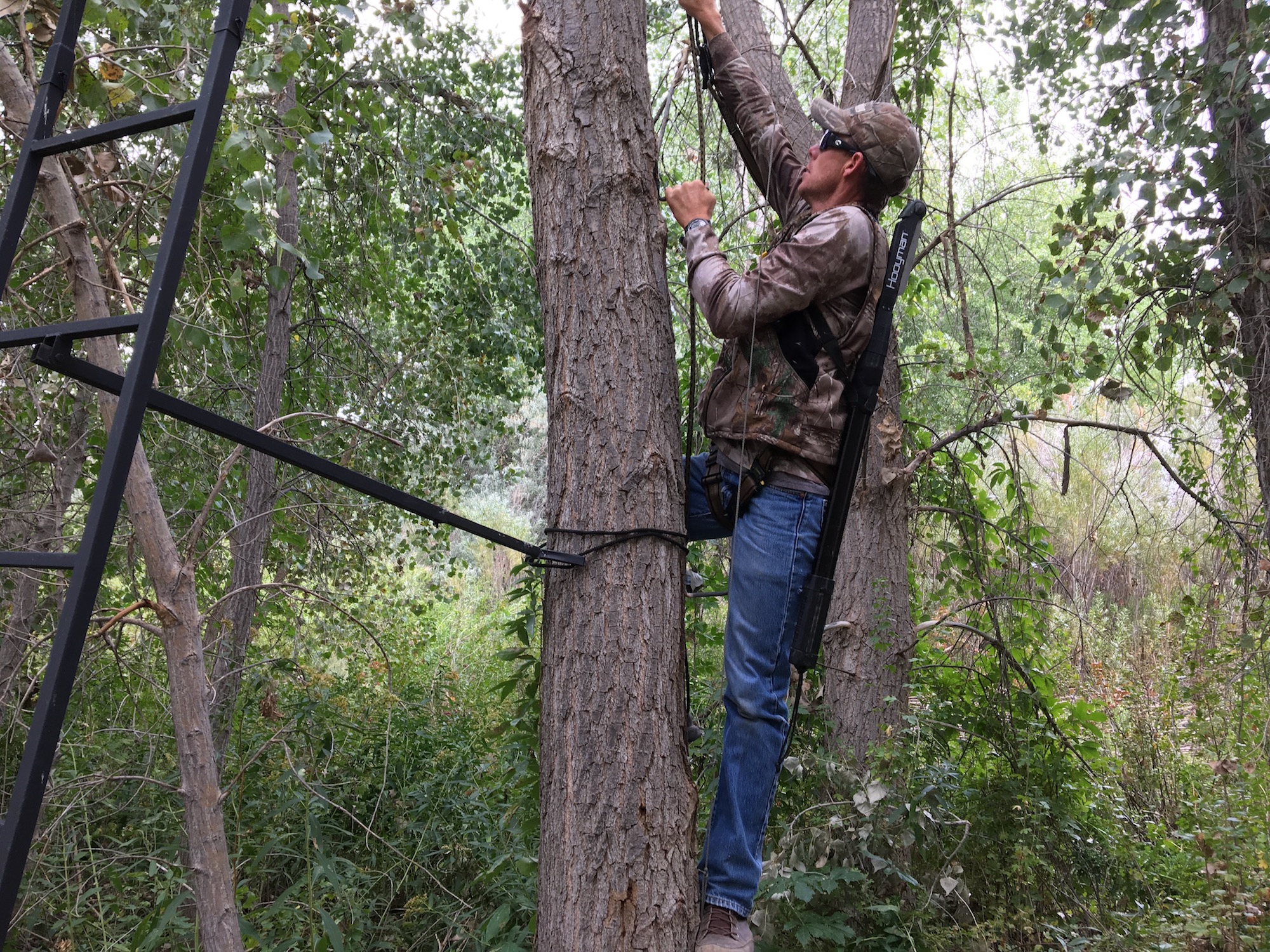Q.
I’m new to hunting. How do I choose a tree for my stand?
A.
Think food and safety and the rest is in the details. Those are covered below.
Location, Location, Location
Before you start looking for that perfect fall perch, you first need to pick the location. Jump on Google Earth or, better yet, take a hike through your hunting grounds. September and October are the first months you can hit the whitetail woods for most states, so we’ll focus on early-season locations.
1. Locate food sources.

Photo: Jace Bauserman
Protein-rich foods like clover and alfalfa are great choices. Look for inside corners and take note of the trails deer used and are likely still using to enter and exit the food source. You’ll also likely find old scrapes and rubs along field edges, a surefire indicator that a buck is in the area.
2. Walk the banks of small creeks and rivers to find water crossings.

Photo: Jace Bauserman
Chances are the deer will still be using them. You’ll surely find a few that are totally trampled. Ignore these, as they are likely utilized heavily by does and fawns. To find the buck crossing, walk upstream and down until you find another path from one bank to the next – one not quite as trampled but stamped with buck tracks.
3. Busy Intersections.

Photo: Jace Bauserman
Follow a few trails from a food source back into the timber, keeping an eye peeled for an area where multiple trails intersect. When you find this spot, mark it on your phone or GPS. This is a hot spot, a spot between food and bed where deer will likely be up and moving before dark. Don’t worry a bit about bumping deer. They will have plenty of time to forget about your presence.
The Right Tree

Photo: Jace Bauserman
Now that you’ve found a few hot early-season locales, it’s time to pick the right tree. Here are a few things to keep in mind when looking for that perfect kill tree.
- Tree of Life. Make sure the tree is alive and doesn’t have a ton of dead branches, especially in the area you plan to hang your stand.
- About the Tree Trunk. Preferably, you want to hang in a tree with a trunk circumference of 10 inches or greater. This should be the circumference at the height at which you mean to hang your stand, not at the tree’s base. The bigger the tree’s circumference, the less it will move in the wind and the sturdier your setup will be.
- How High? Pick a tree that allows you to get off the ground. I prefer to hang my sets between 16 and 20 feet.
- Straight and Easy. The straighter the better. If the trunk is straight at the height you plan to hang your stand, your stand will be easier to hang and you’ll be more comfortable while hunting.
- Cover! Look for a tree, especially during the early season that has plenty of limbs and foliage to break up your form. You can get away with lower stand sets during the early season if the tree you pick boasts heavy cover. However, if you plan to hunt the tree once the leaves fall, I recommend your platform be somewhere between 16 and 20 feet high.
- Wind Patterns Matter. Make sure the tree suits early-season wind patterns for the area.
- Get Off the Trail. If possible, pick a tree that isn’t right on the trail. Straight-down shots are difficult. I like to pick a tree that is 15 or 20 yards away from where I expect to shoot the deer.
- Safety. Always wear a TSA-approved safety vest and lifeline when hanging any treestand, and practice hanging your treestand at ground level a few times to familiarize yourself with the process.
There you have it – the where and how to hang your first early-season set. Get after it, and happy hunting!






